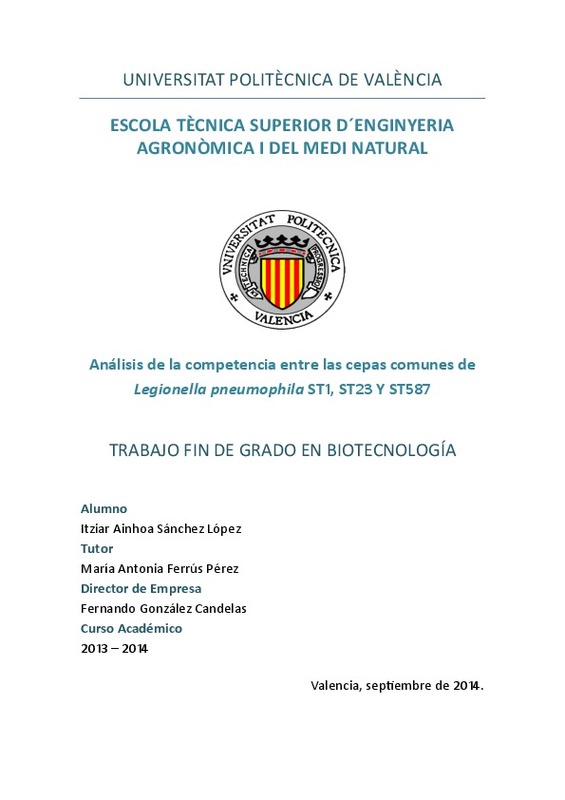|
Resumen:
|
[ES] L. pneumophila es una bacteria gram-positiva que vive en ambientes húmedos y
se transmite por el aire. Se trata de una bacteria patógena para el ser humano.
Existe una gran variedad de cepas, siendo la más frecuente ...[+]
[ES] L. pneumophila es una bacteria gram-positiva que vive en ambientes húmedos y
se transmite por el aire. Se trata de una bacteria patógena para el ser humano.
Existe una gran variedad de cepas, siendo la más frecuente la ST1.
Analizando aislados tanto clínicos como ambientales mediante técnicas de
secuenciación del ADN se han encontrado diferencias en cuanto a la presencia
mayoritaria de varias cepas. En concreto, la ST1 se localiza, principalmente, en
las muestras ambientales, mientras que la ST23 y ST578 en muestras clínicas de
Calpe y Alcoy, respectivamente, lo que complica la identificación de las fuentes
ambientales de los brotes de legionelosis. Estos resultados sugieren que existe
un tipo de selección que se origina durante el cultivo de los aislados en el
laboratorio.
El trabajo presentado consiste en realizar un ensayo sobre la eficacia relativa
(“relative fitness”) de estas tres cepas en competencia, para determinar si
existen diferencias entre ellas entre las frecuencias iniciales y las detectadas tras
someterlas a condiciones de cultivo in vitro estándar.
Los resultados preliminares dejan entrever una posible competencia entre las
distintas cepas, siendo la ST1 la que predomina sobre las otras dos y la ST23
predomina a su vez sobre la ST578. Esto explicaría la hipótesis de partida sobre
las conclusiones extraídas de los aislados de Calpe y Alcoy. Sin embargo,
todavía queda un largo trabajo de comprobación y de extraer más resultados
para confirmar la hipótesis.
[-]
[EN] L. pneumophila is a gram-positive bacterium that lives in moist environments
and is transmitted through the air. It is a pathogenic bacterium to humans. There
are a variety of strains, being ST1 the most frequent ...[+]
[EN] L. pneumophila is a gram-positive bacterium that lives in moist environments
and is transmitted through the air. It is a pathogenic bacterium to humans. There
are a variety of strains, being ST1 the most frequent one.
From the analysis of clinical isolates and environmental by DNA sequencing
techniques, we found differences in the abundance of the different strains.
Specifically, the ST1 is mainly found in environmental samples, while ST23
and ST578 prevail in clinical samples from Calpe and Alcoy, respectively. This
complicates the identification of the environmental sources of legionellosis
outbreaks. These results suggest that there is a certain type of selection that
originates during cultivation of the isolates in the laboratory.
The goal of this work is to conduct a trial on the relative fitness of these three
strains in competition in order to determine the possible existence of differences
between their initial and final frequencies after growth in standard in vitro laboratory conditions.
Our preliminary results point to a possible competition between these strains,
with the ST1 outcompeting the other two and ST23 also outcompeting ST578.
This would explain the assumptions made about the conclusions of isolates
from Calpe and Alcoy. However, there is still a long process of testing and
obtaining more results to confirm the hypothesis.
[-]
|







